Who you are or where you live? Examining the impact of individual and area level effects on reproductive decision-making, health and risky causes of deaths in Northern Ireland. Part one: fertility and reproductive behaviour.
There is a growing understanding that there are social gradients in health, teenage birth rates and causes of morbidity and mortality. However, the more ultimate causes and the more precise patterns that underlie this variation is yet largely unknown (Nettle 2010). The overall project aims to better understand individual and area level effects on reproductive decision-making, health and a range of “risky” behaviours related to mortality in Northern Ireland.









